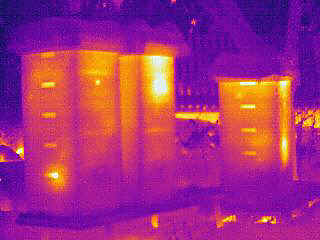Quote: Originally Posted by oliver90owner
...My crownboards are simply a sheet of 9mm ply. No holes or anything fancy. Can't get much simpler than that.
Reply by Finman
6 mm ply?
30% simplier than 9 mm.
I must say that 9 mm ply as inner cover is *.* solution. not at least a good advice to tell others...and others are fancy?
Finman,
I did not really comment on your post responding to me having said my crownboards were plain 9mm ply (14th October), but I now remind you, above, of your apparent rubbish advice/attempted scathing comment. Your reply was sarcastic, at least, and dismissive of 9mm ply, suggesting 6mm was simpler.
Your forked tongue has been revealed in your opening post on this thread where you seemingly indicate your crownboards are 9mm ply also!!!!. To remind you:I have 7 cm thick piece of foam plastic mattres as cover insulation over 9 mm wood board.
It is always easier to be honest at all times, or your mis-truths and empty sarcasm may be found out later.
So, perhaps some of us are not as stupid as you try to make out. Perhaps it is not so clever to do that.
RAB
...My crownboards are simply a sheet of 9mm ply. No holes or anything fancy. Can't get much simpler than that.
Reply by Finman
6 mm ply?
30% simplier than 9 mm.
I must say that 9 mm ply as inner cover is *.* solution. not at least a good advice to tell others...and others are fancy?
Finman,
I did not really comment on your post responding to me having said my crownboards were plain 9mm ply (14th October), but I now remind you, above, of your apparent rubbish advice/attempted scathing comment. Your reply was sarcastic, at least, and dismissive of 9mm ply, suggesting 6mm was simpler.
Your forked tongue has been revealed in your opening post on this thread where you seemingly indicate your crownboards are 9mm ply also!!!!. To remind you:I have 7 cm thick piece of foam plastic mattres as cover insulation over 9 mm wood board.
It is always easier to be honest at all times, or your mis-truths and empty sarcasm may be found out later.
So, perhaps some of us are not as stupid as you try to make out. Perhaps it is not so clever to do that.
RAB




